
Roots
Consider for a moment the silent language of hair, particularly for those whose strands coil and spring, defying the smooth cascade often upheld as a universal standard. For generations rooted in African soil, and those whose ancestral lines traversed vast oceans, hair has served as more than mere adornment. It is a living archive, a narrative of survival, resilience, and profound cultural memory.
This exploration delves into the question ❉ Can traditional ingredients from Africa improve textured hair health? The answer, as we shall see, lies not only in molecular composition but in the deep wisdom passed through touch, ceremony, and the very act of tending to one’s crown.
The journey to comprehending textured hair health begins with an understanding of its unique biological architecture. Unlike straight or wavy strands, textured hair — ranging from loose spirals to tight coils — exhibits a distinct elliptical cross-section, with the tightest curl patterns often presenting a flattened oval shape. This unique geometry, coupled with fewer cuticle layers, can leave textured strands more prone to dryness and breakage.
Yet, these characteristics, often seen through a Western lens as vulnerabilities, are simultaneously hallmarks of extraordinary strength and versatility. Our heritage teaches us this.
Textured hair is a living archive, its spirals holding stories of endurance, adaptability, and cultural continuity from across generations.
Centuries before the advent of modern laboratories, African communities possessed an intuitive grasp of hair’s elemental needs. They observed the flora around them, understanding their properties through generations of applied knowledge. This wisdom, born of intimate connection to the land, formed the foundation for care rituals that sought to nourish, protect, and celebrate hair in all its varied forms. We speak not of simple concoctions, but of a holistic system wherein plant-based elements and practiced hands converged to maintain vitality.

The Hair Strand’s Blueprint from Ancestral Views
To truly appreciate the contributions of traditional African ingredients, one must first recognize the biological make-up of textured hair. Hair, at its elemental core, is protein, primarily keratin. However, the distribution of disulfide bonds within the keratin structure determines the curl pattern.
Tightly coiled hair has an uneven distribution of these bonds, leading to its characteristic bends and twists. This structural particularity results in the cuticle layers, the outer protective scales of the hair shaft, lifting more readily, allowing moisture to escape and making the strand more susceptible to environmental factors.
From ancient Kemet to the vibrant communities of West Africa, people understood that hair was a living fiber, requiring sustenance and gentle manipulation. They observed that certain plant oils and butters provided a barrier, a shield against the sun’s harsh rays and arid winds, akin to a protective balm for the scalp. This intuitive understanding, passed down through oral tradition and practical demonstration, often preceded any scientific dissection of fatty acids or micronutrients. They simply knew, through generations of lived experience, what kept hair pliable and resilient.

Classifying Coils ❉ A Legacy in Definition
The attempt to categorize hair textures, while seemingly a modern endeavor, also has roots, albeit often problematic ones, in historical observation. Systems like the Andre Walker Hair Typing System, which classifies kinky hair as ‘type 4’ (with subtypes 4A, 4B, and 4C) are widely used today. This system describes the tight, dense coil patterns common among people of African descent.
However, earlier, more nuanced descriptions existed within African societies themselves, often linked to tribal identity, geographic origins, and even spiritual beliefs. The language used within these communities was inherently tied to the cultural significance of hair.
Consider the Wolof, Mende, Mandingo, and Yoruba societies, where hair was an intricate part of the cultural fabric. Its appearance conveyed social status, age, religion, ethnic identity, wealth, and communal rank. The diverse textures, from the kinky curls of the Mandingos to the looser spirals of the Ashanti, were not merely physical attributes; they were visual cues, part of a shared lexicon. These indigenous classifications, though not formally codified in scientific papers of the past, were deeply woven into daily life and social interaction, reflecting a profound respect for variations within the human form.
- Mandingo Hair ❉ Often described with kinky, tight curls, signifying certain lineage.
- Ashanti Hair ❉ Frequently noted for its looser curl patterns, tied to specific regional identities.
- Yoruba Styles ❉ Indicating community roles and sometimes a connection to spiritual realms.

The Essential Lexicon ❉ Words That Bind Hair to History
The very vocabulary used to describe textured hair today carries echoes of historical journeys. Terms such as ‘afro,’ ‘cornrows,’ ‘locs,’ and ‘Bantu knots’ have deep cultural and historical resonance. ‘Cornrows,’ for instance, a staple protective style, date back as far as 3000 BCE in the Horn and West Coasts of Africa.
They were not only styles but could communicate messages and even maps during the transatlantic slave trade. Similarly, ‘Bantu knots,’ a style featuring small, coiled buns, connect to the Bantu-speaking communities that spread across Central, Eastern, and Southern Africa millennia ago.
The recognition of these terms in modern lexicons, such as Dictionary.com adding ‘box braids’ with cultural definitions, speaks to the ongoing impact and rightful recognition of Black hair culture. This acknowledgement reflects a broader societal movement towards appreciating the heritage of textured hair, moving beyond reductive or negative descriptors towards a language of respect and celebration.
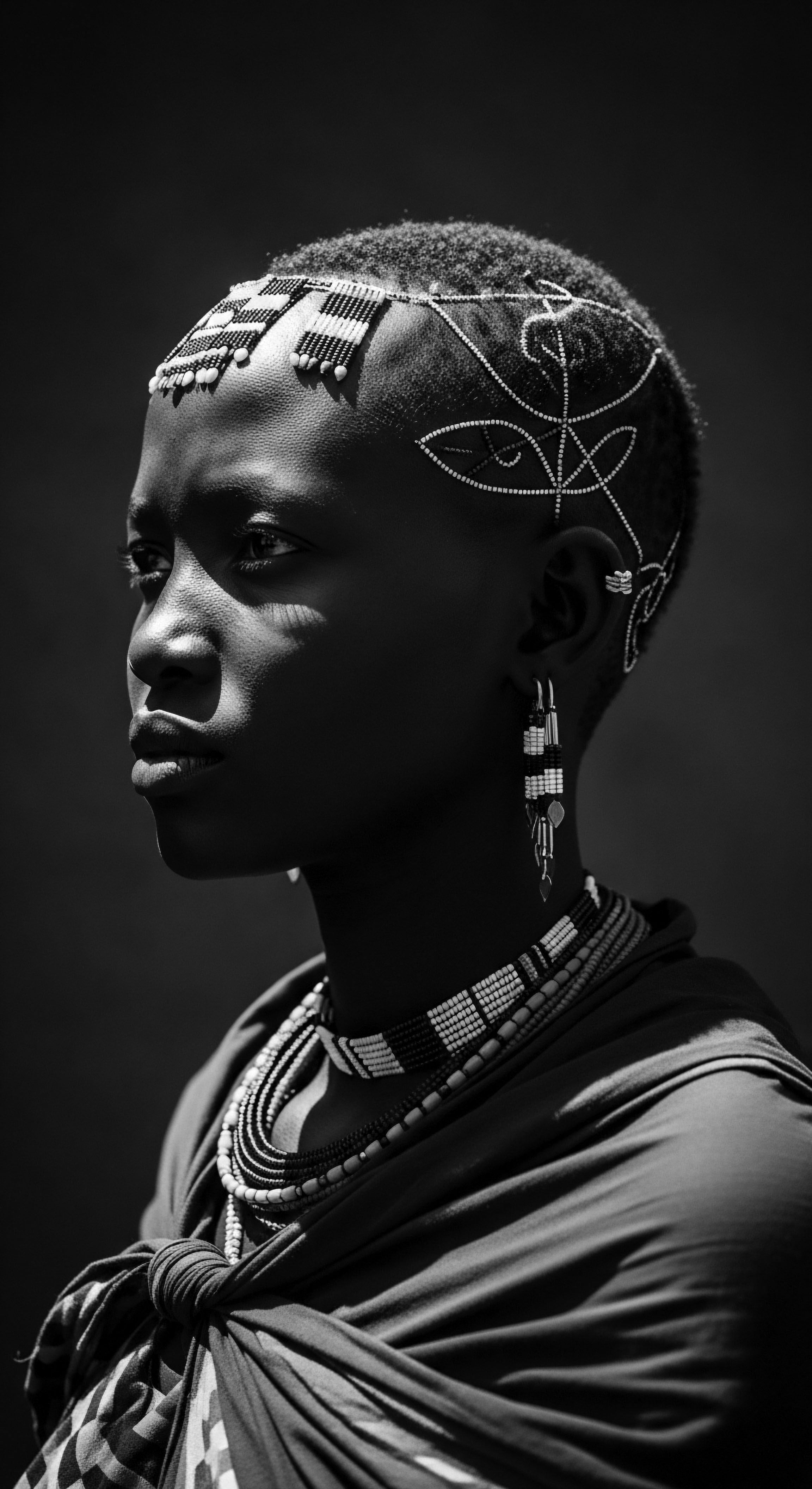
Hair Growth Cycles and Ancestral Factors
Hair growth is a continuous cycle, involving phases of growth (anagen), regression (catagen), and rest (telogen). On average, hair grows about 0.35 millimeters per day, amounting to approximately 1 centimeter per month. However, factors such as age, diet, overall health, and environmental conditions can all sway this rate. Ancestral communities, living in diverse African climates, understood the interplay between their environment and their hair’s well-being.
Their reliance on nutrient-rich plant-based ingredients for both internal consumption and external application points to an intuitive dietary and topical approach to promoting hair health. For instance, the use of various oils and butters not only provided lubrication but also shielded hair from the sun’s drying effects, thus helping to reduce breakage and preserve length. This preventative care, deeply rooted in the wisdom of the land, represents a sophisticated approach to nurturing hair’s natural growth cycle.
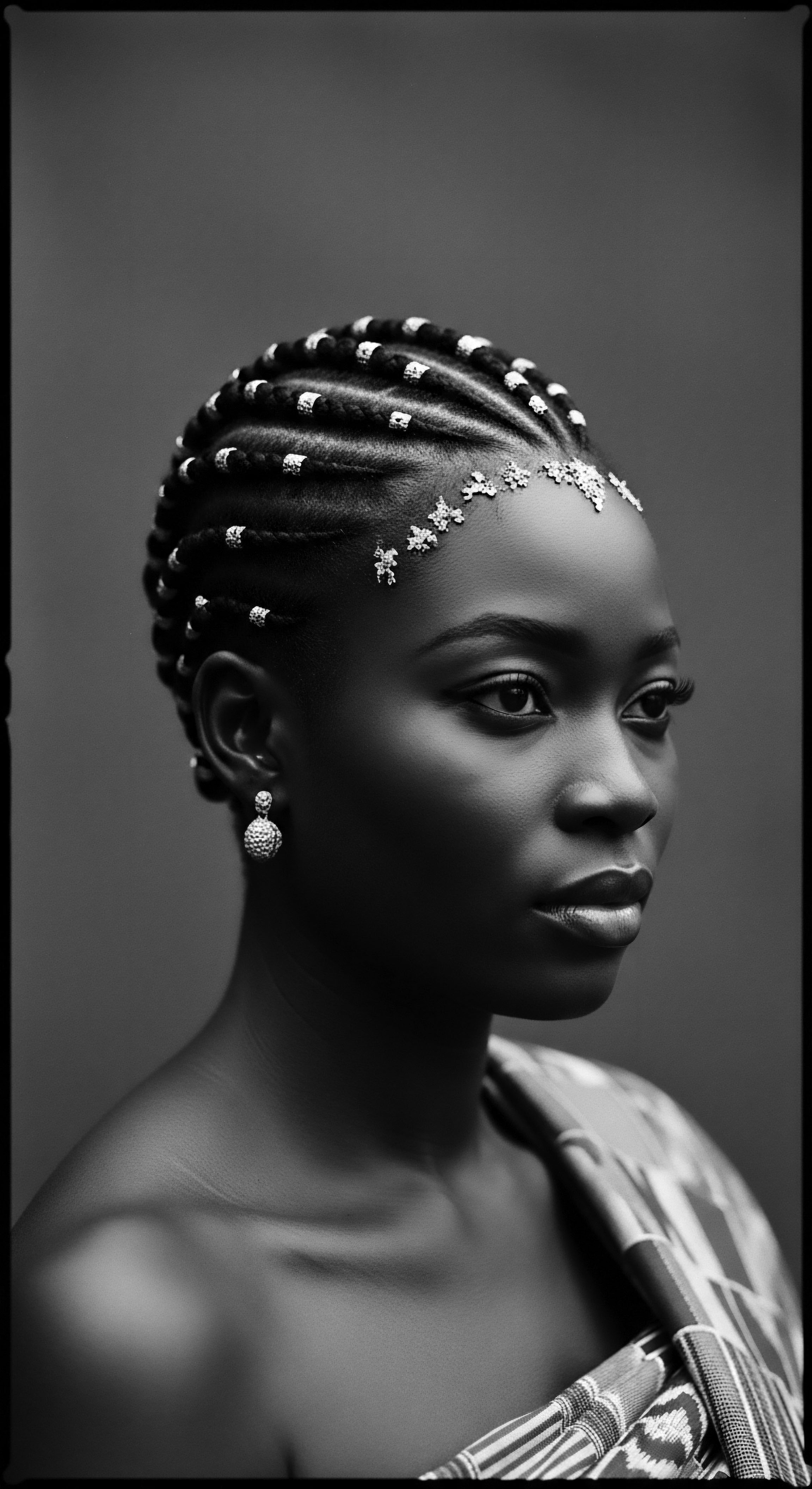
Ritual
The story of textured hair care, particularly concerning the question of whether traditional African ingredients can improve its health, unfolds most compellingly within the realm of ritual. These are not merely actions but a succession of intentional motions, often steeped in community, generational wisdom, and a profound reverence for hair as a sacred part of one’s being. The transition from elemental knowledge to living practice highlights how ancestral communities harnessed the land’s bounty to create regimens that truly served their hair.
Traditional care practices were rarely solitary acts. They were communal events, where grandmothers, mothers, and daughters would gather, sharing stories and techniques as hands braided and coifed. This social dimension amplified the act of hair care, making it a powerful vehicle for cultural transmission and communal bonding. From such intimate gatherings, the efficacy of certain plant-based ingredients became not just empirical knowledge but a lived reality, woven into the fabric of daily life.
Hair care, in its traditional African context, is a communal act, a profound cultural exchange of wisdom and connection.

Protective Styling ❉ Ancient Roots and Modern Relevance
Protective styles, a cornerstone of textured hair care today, derive directly from ancestral practices across Africa. Styles such as Box Braids, Twists, and Locs were not merely aesthetic choices; they were designed to safeguard hair from environmental aggressors, minimize manipulation, and reduce breakage. Their origins date back thousands of years, with each style carrying deep cultural significance, indicating social status, marital status, age, or even tribal affiliation.
During the transatlantic slave trade, protective styles took on an even deeper meaning. Enslaved African women, forcibly stripped of their cultural markers, used braids as a silent, powerful form of resistance and communication. The intricate patterns of cornrows were sometimes used to create maps to escape plantations, and rice seeds were braided into hair, ensuring survival and preserving cultural heritage in a foreign land. This remarkable ingenuity showcases the profound connection between hair practices and the resilience of a people.
| Style Cornrows |
| Origin/Historical Context Horn and West Africa, dating to 3000 BCE. |
| Traditional Purpose/Meaning Communication, mapping escape routes during slavery, tribal identity, age, marital status, wealth. |
| Style Bantu Knots |
| Origin/Historical Context Zulu tribes, Bantu-speaking communities in Central, Eastern, Southern Africa, 2nd millennium BCE. |
| Traditional Purpose/Meaning Cultural identification, protection, later used as a set for curl definition. |
| Style Locs |
| Origin/Historical Context Various African communities, also seen in ancient Egypt. |
| Traditional Purpose/Meaning Spiritual connection, symbol of strength, higher power (Akan people of Ghana). |
| Style These styles embody the deep connection between hair artistry, cultural identity, and historical resilience. |

Natural Styling ❉ Echoes of Traditional Definition
The contemporary natural hair movement, which celebrates coils, kinks, and curls in their unadulterated form, draws directly from ancestral methods of definition. While modern products abound, the principles of minimal manipulation and moisture retention remain constant. Traditional practices involved using natural butters and oils not only for nourishment but also to help group and define curl patterns, providing structure without rigidity.
Take the Himba people of Namibia, whose women are renowned for their ochre-coated dreadlocks, a striking style that reflects their bond to the earth and ancestors. The mixture of ground ochre, goat hair, and butter used to achieve these styles also acts as a protective and defining agent, illustrating an ancient, effective approach to styling that enhances the hair’s natural qualities.

The Complete Textured Hair Toolkit ❉ From Hands to Heirlooms
The toolkit for textured hair care, spanning centuries, has always been an extension of the hands and the wisdom they hold. Before combs of metal or plastic, fingers were the primary detangling and styling tools, gently coaxing strands into submission. This tradition of using one’s hands continues, often seen as the gentlest approach for delicate curls.
The accessories, too, carry historical weight. Headwraps, often crafted from vibrant fabrics, were not just fashionable; they signaled marital status, age, and social standing. They also served a practical purpose, shielding hair from the elements. This dual function of beauty and protection is a testament to the ingenuity of traditional practices, where every element served a purpose, deeply embedded in cultural context.

Relay
The current resurgence of traditional African ingredients within textured hair care is more than a passing inclination; it is a conscious return to ancestral knowledge, a relay of wisdom across generations and continents. Modern science now often provides empirical validation for practices held sacred for centuries, offering a deeper understanding of how these botanical elements contribute to hair’s vitality. The question of whether traditional ingredients from Africa can improve textured hair health finds a resounding affirmation in this convergence of historical practice and contemporary inquiry.
This segment moves beyond the mere presence of these ingredients, delving into their specific roles, their historical use, and the scientific lens through which their efficacy is understood today. It represents a deeper inquiry into the how and why, revealing the intricate dance between tradition and modern understanding, all through the profound lens of heritage.
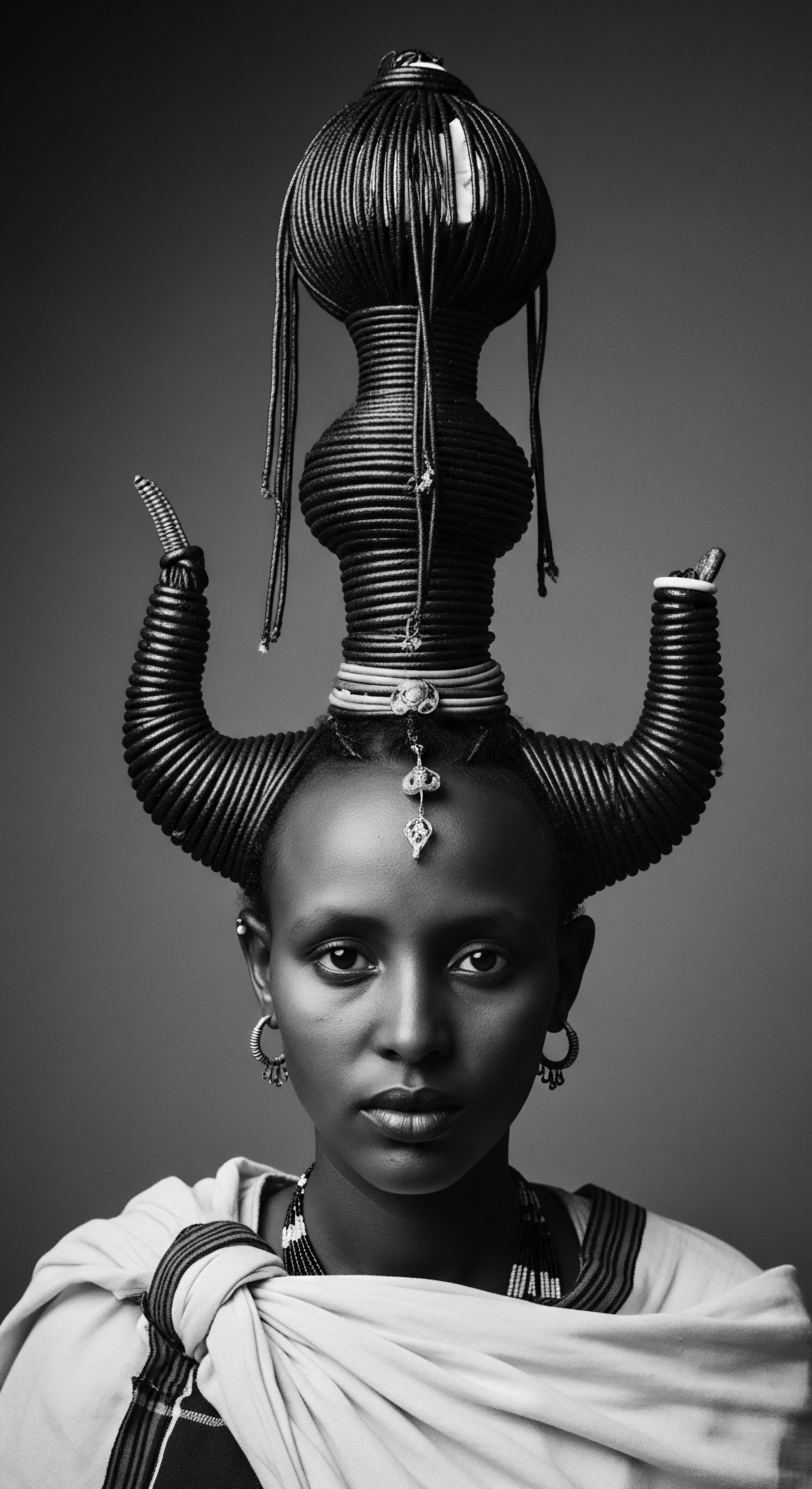
Building Personalized Regimens ❉ A Dialogue with Ancestral Wisdom
The modern hair care landscape sometimes promotes a one-size-fits-all approach, but traditional African practices championed personalization. Communities understood that hair, like individuals, had unique needs influenced by environment, lineage, and lifestyle. Regimens were not rigid formulas but adaptable frameworks, often guided by the hands of experienced elders who could assess hair’s condition and prescribe appropriate natural remedies.
This inherent adaptability is something contemporary textured hair care seeks to reclaim. It moves beyond rigid product lines towards a more intuitive, responsive approach, much like the ancestral wisdom that dictated specific herb applications based on an individual’s hair concerns.

The Nighttime Sanctuary ❉ Preserving Heritage in Sleep
The practice of protecting hair at night, now a staple for many with textured hair, has deep historical roots in African and diasporic communities. From silk scarves to bonnets, these coverings serve as a crucial shield against friction and moisture loss, preserving delicate curl patterns and preventing breakage. This ritual, often passed from mother to child, is a quiet yet powerful act of self-care, a continuity of ancestral wisdom in daily life. As Mariette Williams observed, for many Black women, a hair wrap protects her locs and ensures better sleep, affirming self-care and honoring childhood traditions.
The simple act of wrapping hair at night, often with materials like satin or silk, minimizes the damaging friction caused by cotton pillowcases, which can absorb precious moisture from the hair. This preventative measure speaks to a deep, inherited understanding of hair’s vulnerability and the necessity of its preservation, a practice that has spanned continents and generations.

Ingredient Deep Dives ❉ Nature’s Legacy for Hair
The efficacy of traditional African ingredients in improving textured hair health is increasingly substantiated by scientific analysis. These natural elements, used for centuries, provide essential compounds that align with modern dermatological and trichological understanding of hair care.
Consider a few key examples:
- Chebe Powder ❉ Hailing from Chad, primarily used by the Basara Arab women, Chebe powder is a ground mix of seeds and local ingredients that has gained recognition for promoting hair length retention. While it does not stimulate hair growth from the follicle, its true power lies in its ability to strengthen the hair shaft, reducing breakage and allowing hair to retain its length. Rich in proteins, vitamins, and oleic acids, Chebe creates a protective barrier around the hair, sealing in moisture and safeguarding against environmental stressors like sun exposure and dryness. This historical practice, passed down through generations, effectively addresses the dryness and fragility common in textured hair, enabling remarkable length.
- Kalahari Melon Oil ❉ Extracted from the seeds of a wild watermelon indigenous to the Kalahari Desert, this lightweight, non-greasy oil has a long history of traditional use as a moisturizer and a protector from sun damage. It is particularly notable for its high concentration of essential fatty acids, especially Linoleic Acid (Omega 6), which can constitute 50-70% of its content. These fatty acids are crucial for maintaining the strength of hair cell walls and the scalp’s lipid barrier, thereby enhancing hydration and protecting against elemental damage. Kalahari melon oil’s traditional application to stimulate hair development and provide nutrients to follicles aligns with its modern understanding as a carrier oil, aiding in the absorption of other beneficial ingredients.
- Baobab Oil ❉ Revered as the ‘Tree of Life,’ the baobab tree, native to Africa, yields an oil from its seeds that has been used for centuries in medicine, cuisine, and cultural practices. Baobab oil is a rich source of Omega 3, 6, and 9 fatty acids, alongside vitamins A, E, and D. These components collectively nourish the scalp, strengthen hair strands, reduce breakage, and impart a natural shine. Its moisturizing properties help combat frizz by smoothing the hair cuticle and locking in moisture, making it an ideal choice for textured hair prone to dryness. The oil also possesses anti-inflammatory properties, benefiting scalp health by soothing irritation.
- African Black Soap ❉ Known variously as Ose Dudu or Alata Samina, African black soap originates from West Africa and is handcrafted using plantain skins, cocoa pods, shea butter, and palm kernel oil. This traditional cleanser offers a natural, gentle cleanse for both scalp and hair without stripping essential oils. It is rich in vitamins A and E and possesses natural antibacterial and exfoliating properties, helping to balance the scalp’s natural oils, minimize inflammation, and prevent product buildup. Its historical use for various skin and scalp ailments underscores its efficacy as a holistic cleansing agent, reflecting generations of applied knowledge.
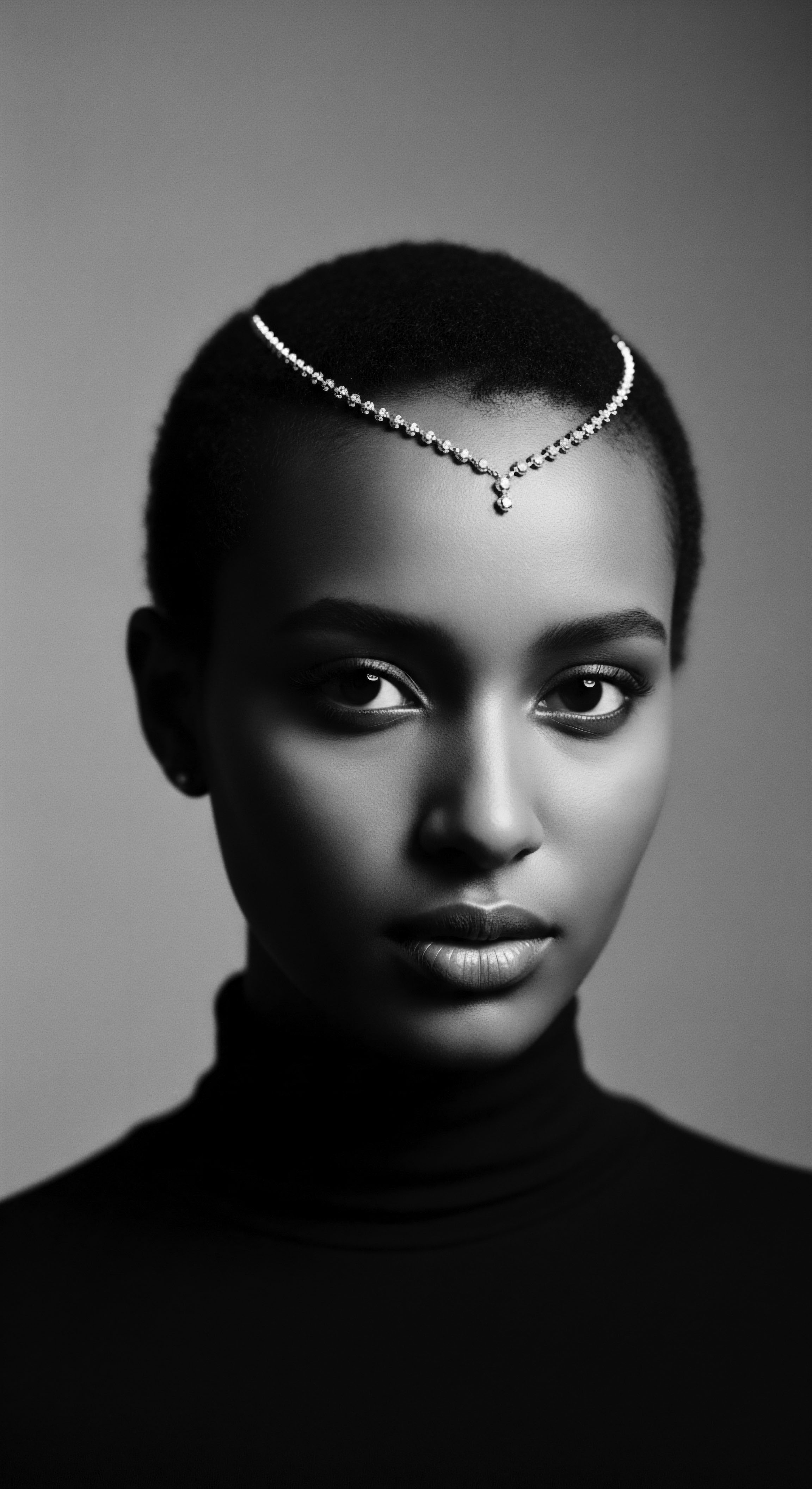
Textured Hair Problem Solving ❉ Ancestral Solutions for Enduring Concerns
Many common textured hair challenges—dryness, breakage, frizz, and scalp irritation—are not new phenomena. Ancestral communities faced these same concerns, albeit with different environmental pressures. Their solutions, based on readily available natural resources, offer profound lessons.
For instance, dryness, a perennial concern for textured hair due to its structural characteristics, was addressed by consistent application of butters like Shea Butter and various plant oils. These substances created a protective layer, sealing in the hair’s inherent moisture and shielding it from dehydration. This was not a quick fix but a regular, gentle approach.
Similarly, issues of breakage were mitigated through protective styling and minimizing manipulation, practices designed to reduce stress on delicate strands. The emphasis was always on preservation, a deeply rooted principle that aligns perfectly with modern understandings of hair health.

Holistic Influences on Hair Health ❉ Beyond the Strand
Ancestral wellness philosophies rarely isolated hair health from overall well-being. Diet, spiritual harmony, and communal connections were all understood to contribute to a person’s vitality, including the health of their hair. A diet rich in indigenous plants, often those providing the very oils and butters used topically, supplied internal nourishment.
Moreover, the communal aspect of hair care, where women shared knowledge and spent hours tending to one another’s hair, fostered a sense of belonging and reduced stress. This collective care provided social and emotional sustenance, factors now recognized as contributing to overall health and, by extension, hair vitality. The understanding that beauty was an outward manifestation of internal balance is a powerful legacy that continues to shape our approach to textured hair health.

Reflection
To ponder the question ❉ Can traditional ingredients from Africa improve textured hair health? is to embark on a journey that transcends simple chemical analysis. It is to acknowledge the profound legacy of human ingenuity, resilience, and an intimate dialogue with the natural world. The answer resounds not just in the lipids of baobab or the strengthening proteins of Chebe, but in the enduring spirit of care passed down through generations.
Roothea’s ethos, “Soul of a Strand,” speaks to this very truth ❉ that every coil, every kink, every gentle wave carries a deep historical memory. It is a memory of forced shaves during enslavement, an attempt to strip identity, and the defiant act of braiding rice seeds into hair as a beacon of survival. It is the quiet strength of the Tignon laws being subverted by women who adorned their required headwraps with such beauty that they transformed symbols of oppression into statements of enduring pride. These are not mere anecdotes; they are foundational elements of a living heritage, a testament to hair as an inseparable part of identity and resistance.
The exploration of traditional African ingredients for textured hair health becomes, then, a pilgrimage back to source. It honors the hands that first pounded shea nuts, the eyes that discerned the power of the Kalahari melon, and the voices that sang praises over Chebe rituals. Modern scientific validation simply lends another layer of understanding to a truth long held in the hearts and hands of ancestral healers and beauty practitioners. We are not just tending to hair; we are connecting to a wisdom that stretches back through the dust of ancient paths, a wisdom that invites us to listen, learn, and grow, just as our strands have always done.
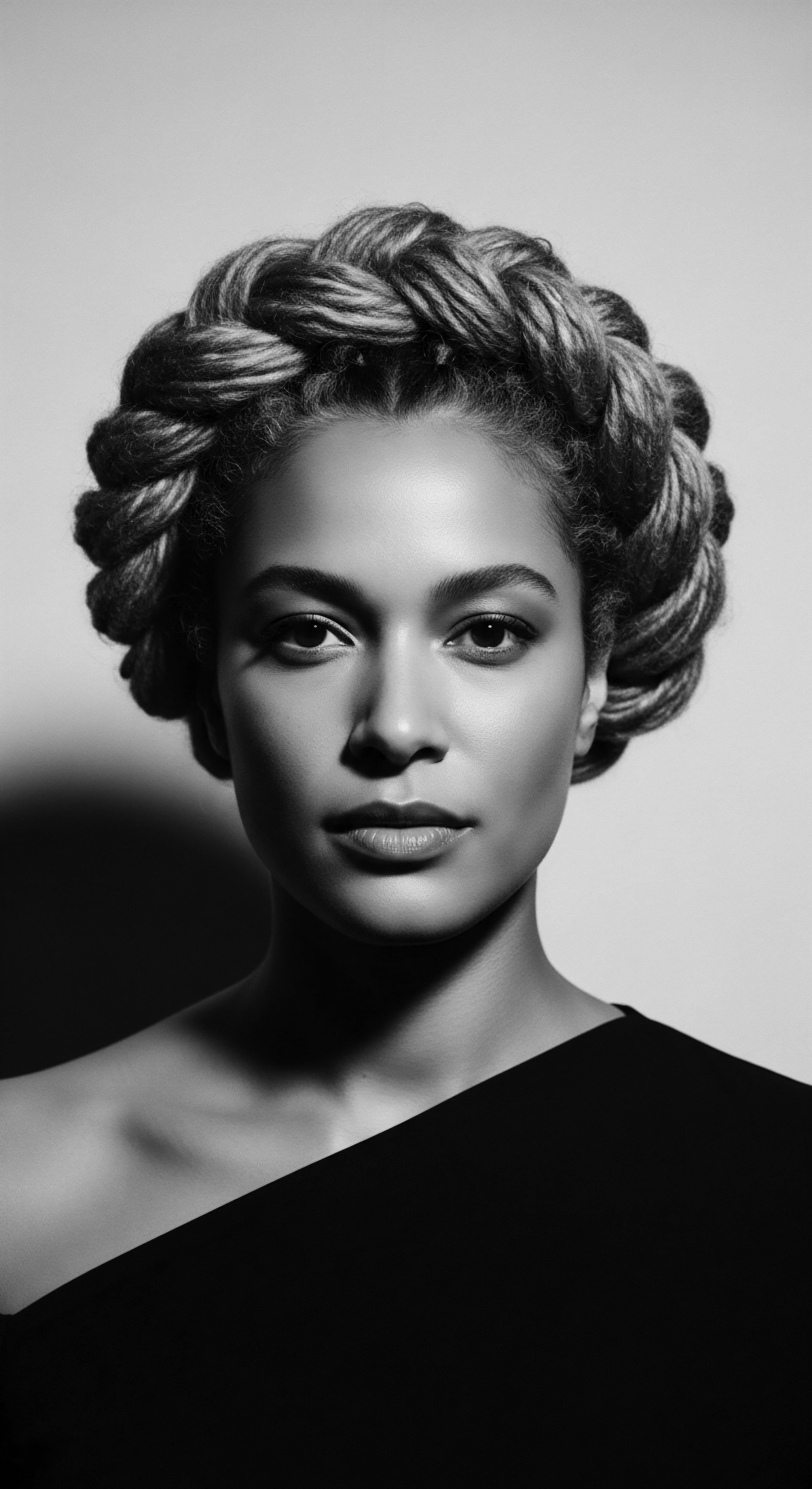
References
- Afriklens. (2024, November 1). African Hairstyles ❉ Cultural Significance and Legacy.
- BLAM UK CIC. (2022, September 15). The history of Black Hair.
- The Gale Review. (2021, November 23). African Hairstyles ❉ The “Dreaded” Colonial Legacy.
- Creative Support. The History of Black Hair.
- African American Museum of Iowa. History of Hair.
- Hair Care Practices from the Diaspora ❉ A Look at Africa, America, and Europe. (2025, January 23).
- Historical Perspectives on Hair Care and Common Styling Practices in Black Women. (2025, March 4).
- botanica.africa. (2023, September 27). Nutritional content and benefits of Kalahari Melon Seed Oil.
- Chéribé. Do Chébé Hair Products Work?
- Obé Headwear. (2024, August 5). Significance of headwraps | Hair care.
- Assendelft. Unlocking the Secrets of Chebe Powder from Chad ❉ Benefits and Uses.
- African American Registry. Black Hair Care and Its Culture, a story.
- Johnson, K. & Bankhead, S. (2014). Beauty as Violence ❉ ‘Beautiful’ Hair and the Cultural Violence of Identity Erasure. Rhetoric of Natural Hair ❉ Cultural Contradictions, p. 88.
- Marie Claire. (2022, November 11). The Benefits of Chebe Powder, Explained.
- Livara Natural Organics. (2023, February 7). Black History Month ❉ The Rich History of Our African Hair.
- Chrisam Naturals. (2024, November 7). Chebe Powder for Hair Growth and Health.
- DLG NATURALS BLOG. (2016, July 28). Kalahari Melon Seed Oil.
- Marie Claire Nigeria. (2025, May 23). The African woman’s hairnet covers more than just hair — it’s a legacy.
- Nku Naturals. (2023, November 16). African Black Soap Hair and Scalp Treatment.
- What Every Dermatologist Must Know About the History of Black Hair. (2023, November 30).
- SEVICH. The Cultural Background and History of Chebe Powder.
- Wikipedia. Protective hairstyle.
- Flora & Curl. The History of Black Hairstyles.
- O&3. (2024, February 28). Baobab Oil ❉ Blending Tradition with Modern Beauty.
- Prose. Best Ingredients for Hair ❉ Baobab Oil.
- Historical Significance of Black Hairstyles.pptx.
- BBC News. (2015, May 31). How does black hair reflect black history?
- Wikipedia. Kinky hair.
- Sleep.com. (2021, September 3). How a Hair Wrap Routine Protects More Than Just My Hair.
- The Real Story Behind Black Soap Shampoo and Hair Growth ❉ Science, Tra. (2025, June 1).
- pan-African. (2021, March 4). Effective Afro Hair Care Routines.
- Tattvalogy. (2023, August 2). Baobab Oil ❉ Nature’s Gift for Radiant Skin and Luscious Hair.
- EcoFreax. (2023, August 24). African Black Soap ❉ The Natural Wonder for Skin and Hair.
- Harnessing the Power of Baobab Oil ❉ A Natural Elixir for Radiant Skin and Lustrous Hair. (2024, January 23).
- Karethic. (2021, September 22). The complete ritual for natural hair.
- Prose. Best Ingredients for Hair ❉ Kalahari Melon Oil.
- Beds SU. (2022, October 7). Black History Month ❉ The History Behind Cornrows.
- Black Enterprise. (2023, September 13). Dictionary.com Adds New Cultural Terms, Including AAVE Phrases.
- CleanO2. (2023, March 14). Why We Love Baobab Extract for Hair Care .
- Voice Online. (2022, October 27). Afro hair, let’s get the language right.
- Nku Naturals. (2023, March 13). The History and Cultural Significance of African Black Soap.
- Cosmetics Business. (2025, March 12). Kalahari melon oil is the moisturising hero your hair needs.
- Afrocenchix. (2021, January 13). The Ultimate Black & Natural Hair Glossary | 2022 Edition.
- Scott Bader Personal Care. Texiterra Kalahari Melon Seed Oil.
- Cleveland Clinic Health Essentials. (2022, October 17). Benefits of Using African Black Soap.
